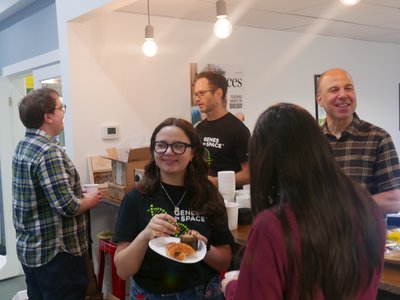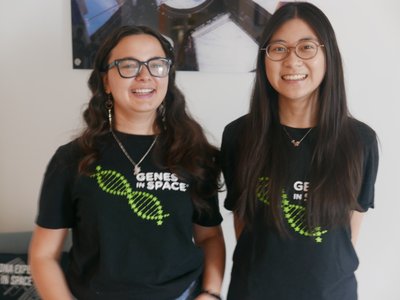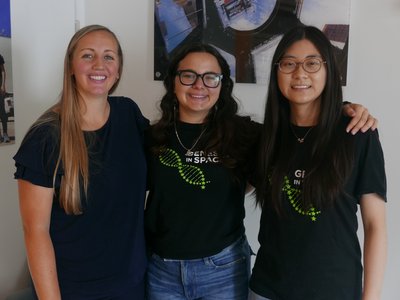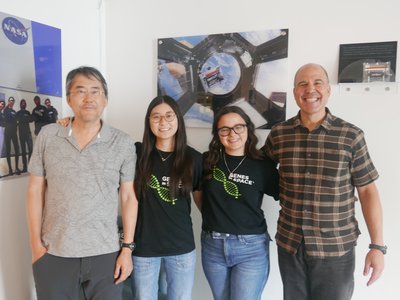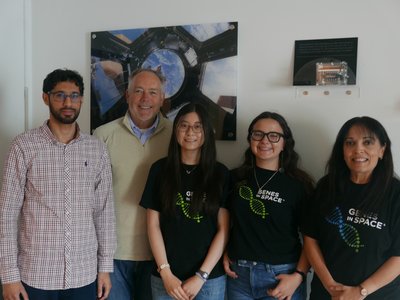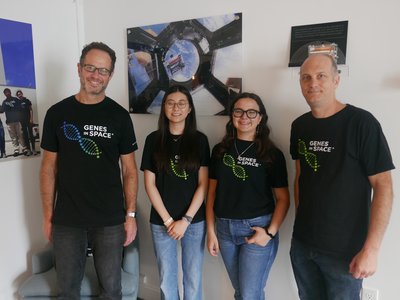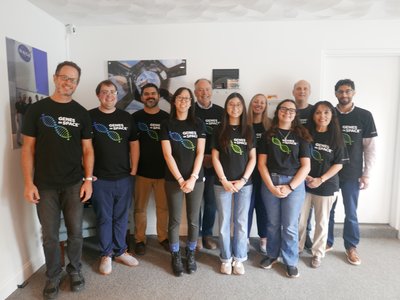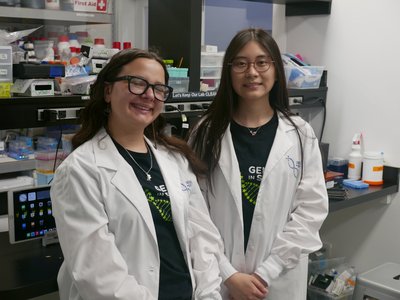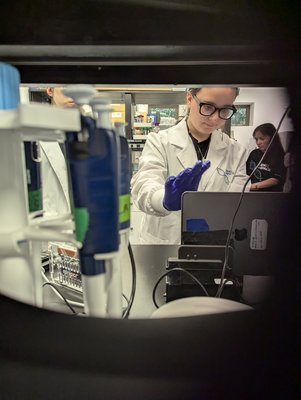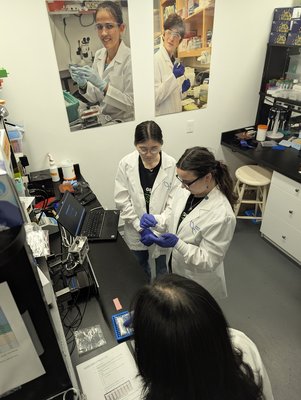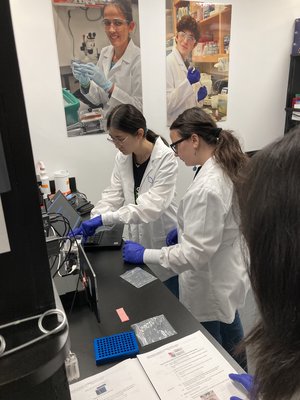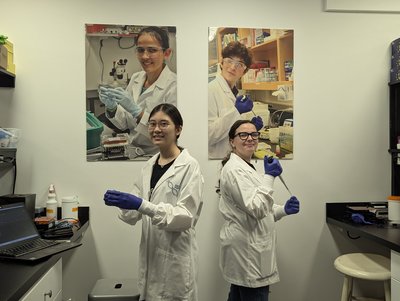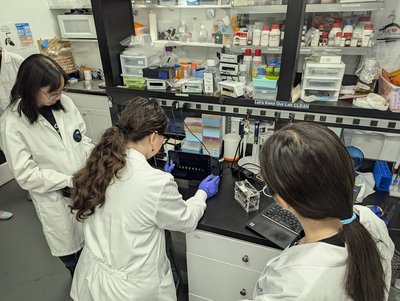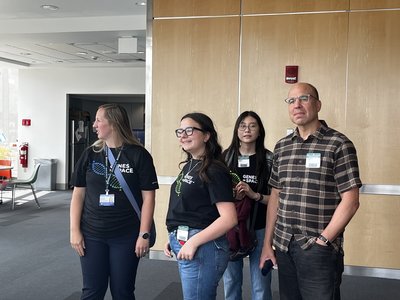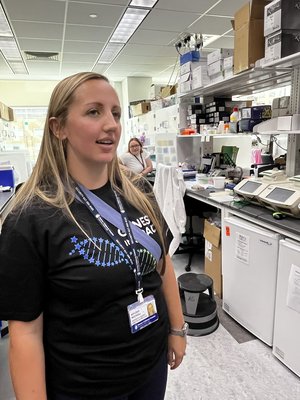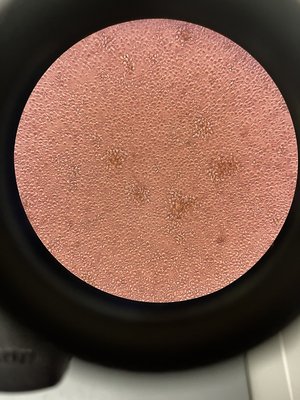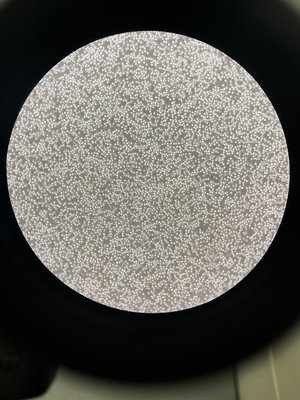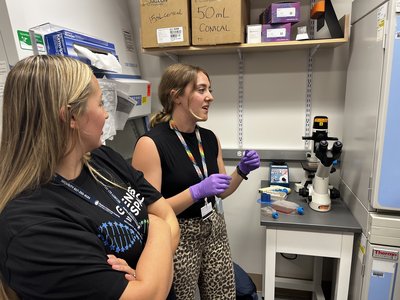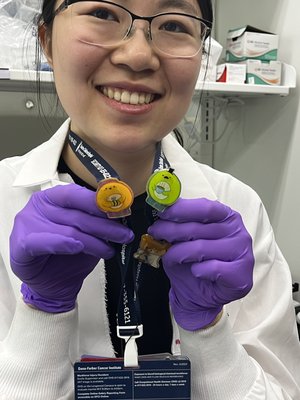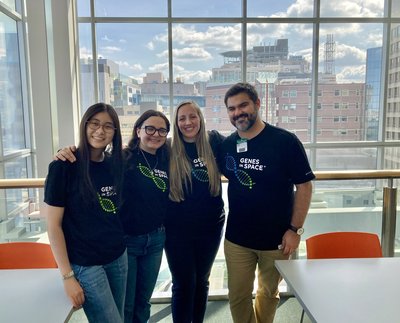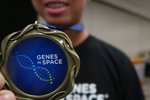2024 Winners attend Space Biology Camp in Boston
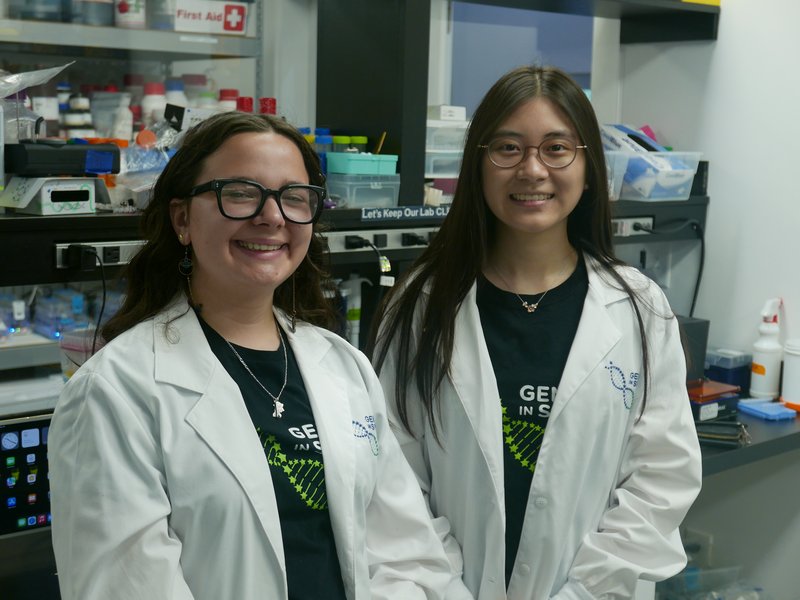
2024 winners Julia Gross (left) and Isabelle Chuang (right) at miniPCR bio headquarters
Earlier this month, Genes in Space 2024 winners Julia Gross and Isabelle Chuang traveled from New York to Boston to complete an important milestone before the launch of their pioneering experiment: Space Biology Camp! At Space Biology Camp, GiS winners carry out the protocol of their investigation for the first time, as part of the process of preparing their work for launch.
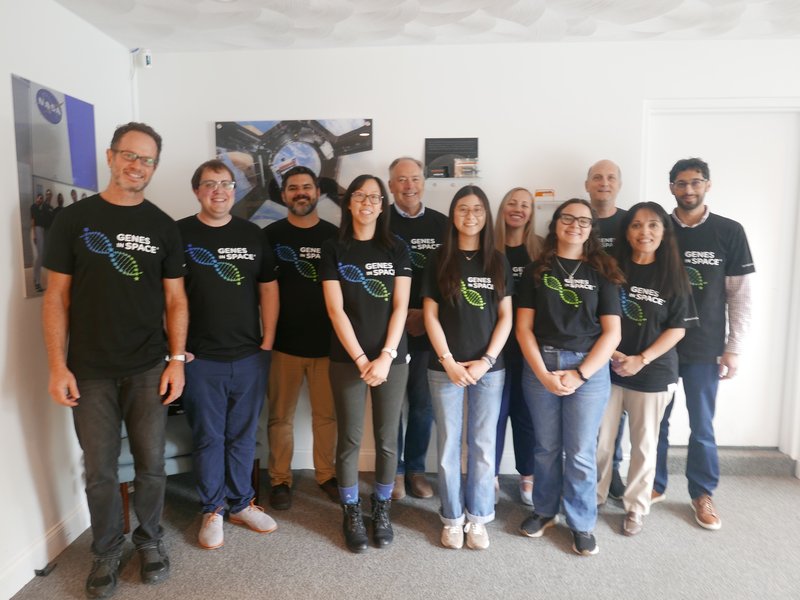
Julia and Isabelle were joined by team members from miniPCR bio, New England Biolabs, and Boeing, and remotely by the International Space Station National Laboratory
After a welcome breakfast and a brief tour of the miniPCR office, the students presented an overview of the science of their Genes in Space-12 investigation. They were joined by miniPCR bio's Lead Research Scientist, Dr. Ally Huang, and New England Biolabs Research Scientist, Dr. Jesse Pyle, who have been instrumental in the development of this project.
Space missions, especially long ones, need ways to treat bacterial infections far from Earth. The Genes in Space-12 experiment will investigate the potential of phage therapy as an alternative to antibiotics for astronauts. In space, bacteria can grow stronger, and antibiotics may not work as well. Bacteriophages, or phages, are viruses that specifically target bacteria. Phage therapy uses them to lyse, or burst open, bacteria to kill them and treat the infection. However, before phage therapy can be used in space, we first need to characterize the behavior of phages in space. This experiment will investigate two specific elements: 1) how phages can be made in space, and 2) measuring how well phages kill bacteria in space.
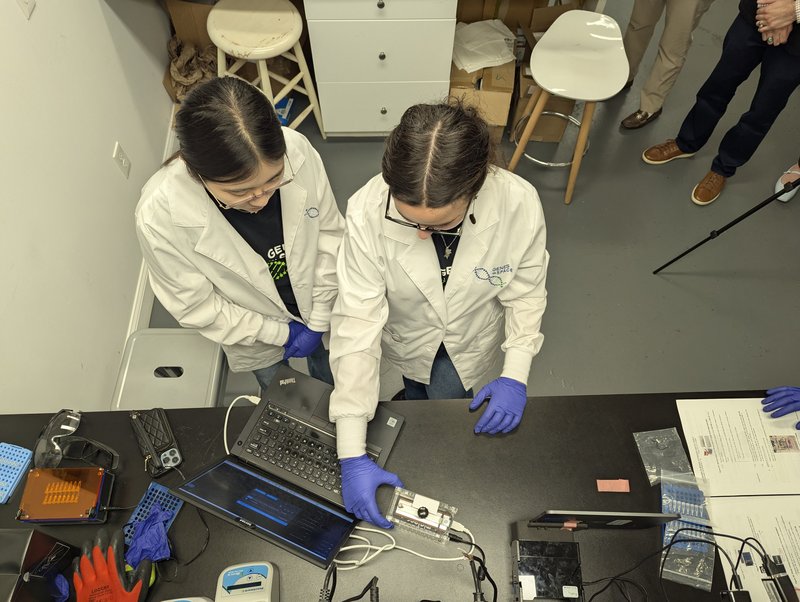
Isabelle (left) and Julia (right) using the miniPCR to lyse bacterial cells
The investigation tests two critical aspects of phage therapy:
- Making phages in space: Normally, making phages requires living cells, which is difficult on the International Space Station (ISS). Instead, this experiment will test a cell-free protein expression system called PURExpress®. This system uses DNA instructions to synthesize a key bacteriophage enzyme called SP6 Polymerase. To verify that this manufactured phage enzyme works, they'll use the new enzyme to express a fluorescent protein called Green Fluorescent Protein (GFP). If the protein glows, it means the phage-making process was successful. The reactions will be incubated in the onboard miniPCR device and have their fluorescence visualized by the onboard Genes in Space Fluorescence Viewer (GiS Viewer)
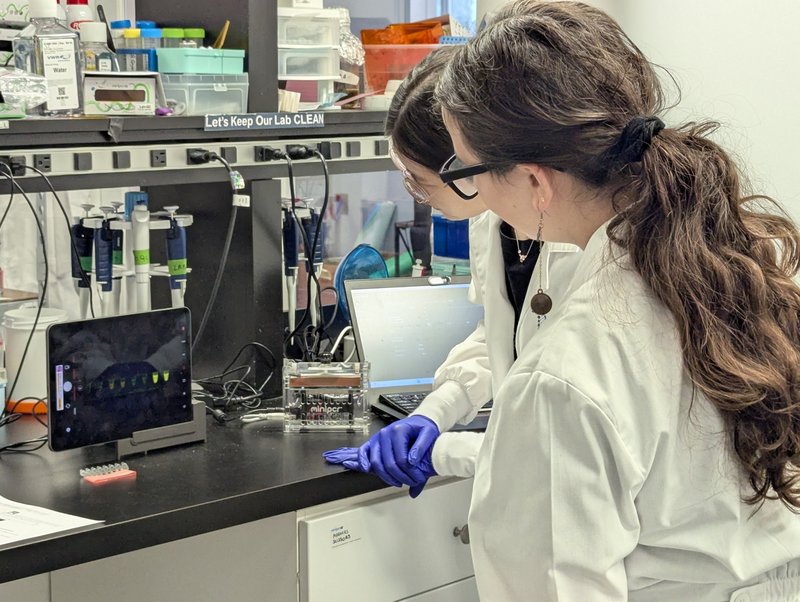
Isabelle and Julia viewing the Green Fluorescent Protein that indicates that they were able to synthesize functional phage parts
- Measuring the efficacy of phage therapy in space: Typically, this is achieved using a plaque-forming assay, which requires cell cultures that are challenging to maintain in space. This experiment will test a new method using a membrane-impermeable dye. If bacteria are killed and break open, their DNA will be released and bind to the dye, which provides a fluorescent visual readout. GIS-12 will first test this by heating bacteria in the miniPCR to break them open. When the bacteria lyse and burst from the heat, the released DNA should bind to the dye and the fluorescence can be visualized by the onboard Genes in Space Fluorescence Viewer (GiS Viewer) device.
Successfully testing these methods could support phage therapy as a valid way to fight bacterial infections in space and help us learn more about how phages and bacteria behave in space.
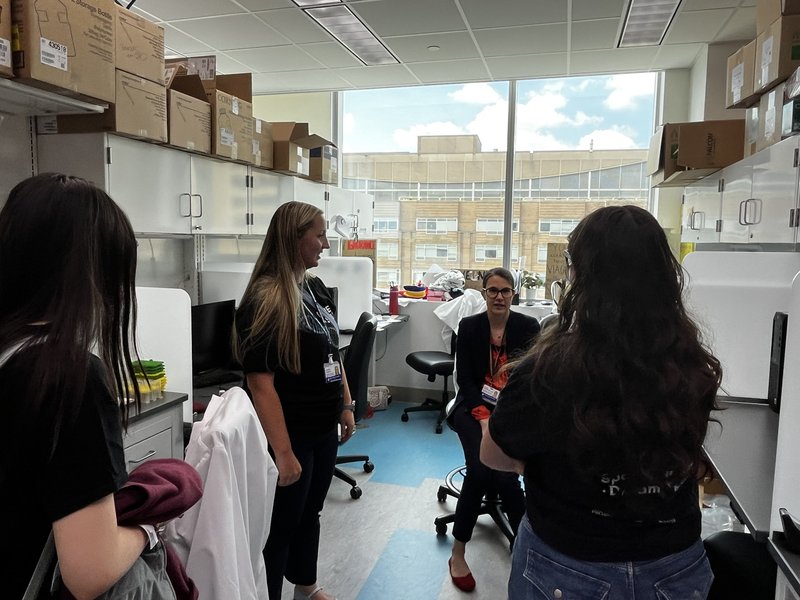
The students and Dr. Kayleigh Ingersoll met with Principal Investigator Dr. Ulrike Gerdeman at Harvard Medical School
After lunch, the students’ mentor, Dr. Kayleigh Ingersoll Omdahl, provided a tour of Harvard University's Medical School campus, as well as the lab where she completed her PhD research on the immune response to bone marrow transplants to improve outcomes for patients. The students met with a Principal Investigator and learned how the lab was providing CRISPR-edited T-cells to reduce the risk of host versus graft disease in cancer patients at Children's Hospital.
The Genes in Space-12 experiment is currently expected to launch to the International Space Station in August. Our team is excited provide more updates as the launch date approaches! As for the student winners, Julia will continue her academic journey in biology at Amherst College this fall, and Isabelle will similarly pursue biology at MIT!

